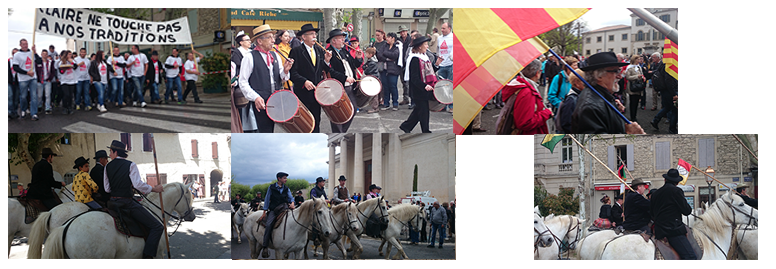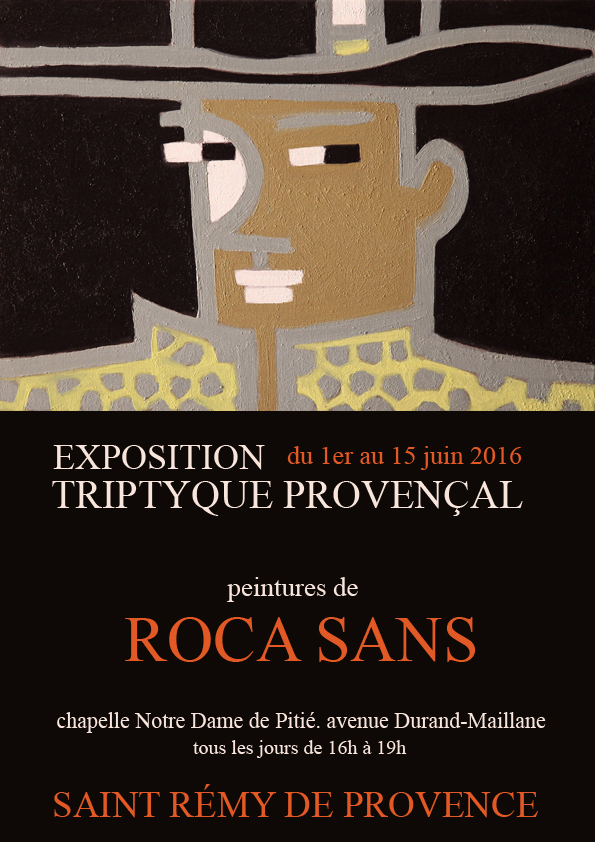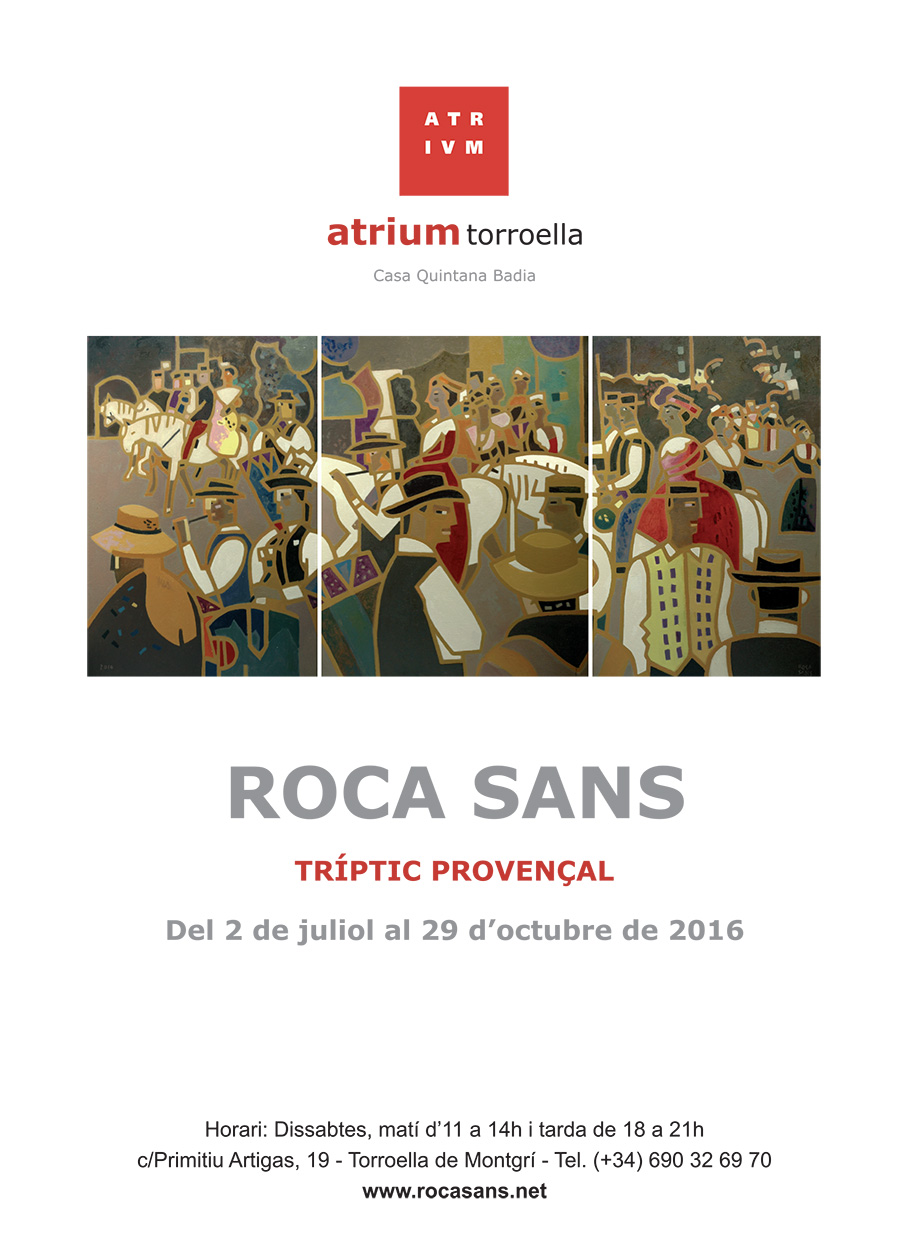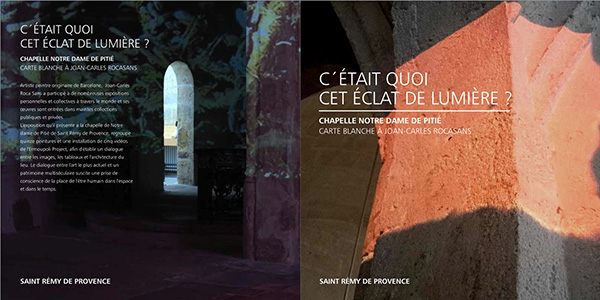
THE OGRE AND THE HUMMINGBIRD
Fragment of the homonym tale by Joan C. Roca Sans
Two months earlier, while I was staying at Veronique’s home, something unexpected happened which gave me the idea for a great subject. While we were having lunch at Mas de la Pyramide, located in an old Roman quarry, we heard someone talking about a demonstration planned for the next day in Saint Remy. A girl said she wasn’t going to miss it for the world. –Yes, of course I’m going, because I’m a guard of the bulls, I can ride a horse and I’ve always got my outfit ready.
So, on Sunday morning, a crowd of men and women dressed in traditional costumes, nearly a hundred guards of the bulls mounted on white horses, accompanied by tambourine players and banner and flag bearers, took to the streets to protest for something which seemed so petty as is the legal ban of a celebration with young bulls running in the streets of the village of Eyragues.
When I asked what was going on, I found out that this tug of war had started at least two centuries earlier and that the persistent efforts of central government to repress all bullfighting games ended up turning them into a symbol of freedom in Provence. It was another episode in the long struggle against cultural uniformity that Paris has always wanted to impose. The demonstration in Saint Remy had an epic tone and I decided that these kinds of themes were sometimes necessary for painting.
We artists don’t work by deduction but by association. Protesting banners, the riders and the red and yellow striped flags of Provence, merged in my mind with the Piero horses of Francesca, the battles of Paolo Uccello, the Nitrato de Chile poster stuck on the façade of my studio and many other things. My mobile phone camera was overworked.., there was no time to make notes. And that is how the Dinou d’abril (19th April) series was created in Saint Remy de Provence, which I included in the Mare Nostrum Project.
I focused on the new series. There was nothing traditionalistic about it, since believing in tradition and trying to resurrect it is to assume that it is dead. It wasn’t a matter of going back in time, nor of restoring a traditional order but rather the complete opposite. It was all about evoking the first moment of creation. The work of art, had to be “zeitlos”, timeless, like coming out of a dream, in order to satisfy the oldest desire in us.
Because the work of art should not be seen as an evolutionary process but as a series of coincidences, related artistic natures that are reunited and lost in time, just like a flat stone skimming across the sea that bounces and bounces on the surface before finally sinking.
Where would the starting point for art be, if not from within this joy, from this pressure towards an endless start? as Rilke wrote.
When I came on the scene as an artist in the seventies, after honing my skills in Barcelona, I got the feeling that painting was dead in the water, that it was seen as an old fashioned passion and despite everything, I had spent every moment of my life on it. I have always thought that an artist who has something to say does not follow the order of time blindly, as a servant would, and pays no heed to what is, what has been or what will be in the history of art. Tired of the messianic ideology of the avant-garde, I had made my own way along the paths of figurative postmodernity with my own iconography.
The series keeps growing
When I returned to San Remy the series began to make sense. Catherine had seen the first painting in the Peralada workshop, and she had even gladly applied colour to some horses, something she did with scrupulous care.
© JC Roca Sans
DRAWING
PAINTING
Big format
Medium format
Faces
TRIPTYQUE PROVENÇAL
Painting
Making off
RELATED IMAGES
Coming soon
Saint Rémy de Provence
Triptyque Provençal
EXHIBITION
Click on image to open the PDF.
Chapelle Notre-Dame-de-Pitié
Avenue Durand-Maillane. 13210 Saint Rémy de Provence
Du 1er au 15 de Juin 2016

Atrium Torroella. Sales d’exposició del Projecte Ermoupoli
Carrer Primitiu Artigas 19. 17257 Torroella de Montgrí
Del 24 de juny al 30 d’octobre 2016

TRIPTYQUE PROVENÇAL
Est le titre de l’exposition de peintures de Joan Carles Roca Sans (Barcelona 1946) à ne pas manquer à Saint Rémy de Provence au mois de Juin.
Lieu : Chapelle Notre-Dame de Pitié. Avenue Durand-Maillane. 13210 Saint Rémy de Provence Date : Du 1er au 15 Juin 2016
Le 19 avril 2015 eut lieu à Saint Rémy une grande manifestation pour défendre les traditions de la Provence. Elle a inspiré l’auteur pour peindre cet éblouissant Triptyque Provençal. La collection est un nouvel épisode du Project Ermoupoli et sera présenté à Saint Rémy de Provence samedi, le 4 juin, à 18h.
Adjoint un dossier pour en savoir plus sur l’auteur.
Juan Carlos ROCA SANS est né à Barcelone en 1946. Il a étudié l’administration des affaires à l’ESADE et trois cours de beaux-arts à l’université de Sant Jordi.
LE PROJECT ERMÓUPOLI
2007/2013 – Le projet Ermóupoli s’inscrit dans une tradition littéraire qui a émergé à la Renaissance: une collection d’histoires qui se déroulent à différents endroits de la Méditerranée, où différents personnages vivent des expériences qui transforment leur vie. Chaque étape du projet (jusqu’à maintenant, il y en a dix) est présentée dans une exposition et en même temps sur www.rocasans.net: on peut y trouver la plate-forme virtuelle du projet, qui pour l’instant n’a pas de date d’achèvement.
Certains aspects pertinents de l’avant-garde, aujourd’hui encore, gardent leur vigueur. Mais, avec les grands «récits de l’émancipation” en crise, l’idée actuelle d’un projet comme Ermóupoli doit nécessairement être beaucoup plus concret et circonstanciel, lié à l’idée de transmettre une vision personnelle de la vie et une transformation possible de la conscience. L’intérêt pour l’application des nouvelles technologies a grandi à mesure que le projet se consolidait. C’est alors que l’artiste découvre comment fixer la lumière sur le marbre, le fer et le méthacrylate, avec des machines numériques et essaie l’intelligence artificielle en appliquant des programmes Cad – Cam sur des fraiseuses.
Le nouveau et l’ancien sont les deux faces d’une même médaille. « L’art avance avec la mise au jour du passé » souligne-t-il. Les notes de voyage, une fois numérisées et travaillées avec des programmes d’édition d’image, deviennent des courts métrages d’animation et des impressions sur papier de riz pour remplir les salles de musées et fondations. Il s’engage pour une liberté créative sans frontières ni hiérarchies entre langages artistiques où le support sensible (peinture, sculpture, photographie, vidéo et installations) dépend de sa disposition communicative et des matériaux ramassées à chaque voyage.
Le Projet Ermóupoli se caractérise par l’amour de l’expérimentation, la compréhension de l’expérience artistique comme un fragment et comme la fusion entre des différents plans anthropologiques: l’émotion et le concept, le jeu et le sérieux, la raison et le sentiment, l’ordre et le chaos. C’est son esprit, qui met en évidence l’obsessive présence du trinôme sexe, vie et mort qu’articule le trajet de l’artiste.
Le www.rocasans.net Web accueille les histoires complètes, toutes les images, vidéos d’animation, commentant les expositions de chaque étape de l’itinéraire qui articule le projet.
Les sites choisis pour les expositions ont été:
SIROS. Down to Hades. 2007 – Apothiki Foundation. Paroikia. Paros. Grèce.
MALTA. Les documents de Schcermerhorn. 2009. Castell de Palau-Sator.
PATMOS. Janus, deux faces. 2010. Museu d’escultura contemporània. Fondació Vila Casas. Can Mario. Palafrugell.
TANGER. Le parfum de jasmin. 2011. Museu de la Mediterrània. Torroella de Montgrí.
CHIPRE. La frontière. 2011-12. Museu de fotografia contemporania. Fundació Vila Casas. Palau Solterra. Torroella de Montgrí.
DUBROVNIK. Le siège. 2011-12. Museu de pintura contemporània. Fundació Vila Casas. Can Framis. Barcelone.
CARLOFORTE. Le piège. 2012. Societat l’Amistat. Casino de Cadaqués.
SIDI BOU SAID. Deux âmes. 2013. Ulled Comunicación. Barcelone.
SYRACUSE. Lucia Luca et l’architecte allemand. 2013. Castell de Benedormiens. Castell d’Aro.
LAMPEDUSA. La grande fugue. 2015. Fort Bellegarde. Le Pertus. France.
SAINT RÉMY DE PROVENCE. Triptyque provençal. 2016. Chapelle Notre Dame de Pitié. Saint Rémy de Provence. France.













































































